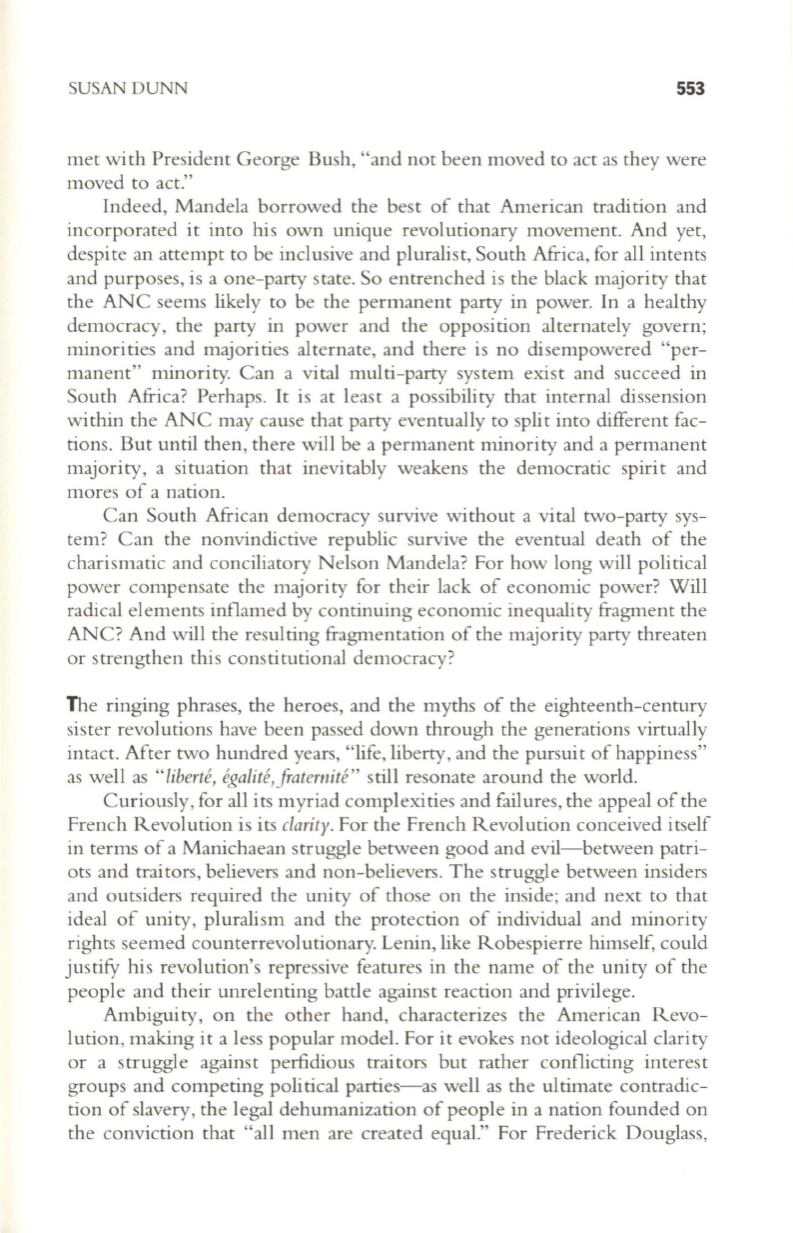
SUSAN DUNN
553
met with President George Bush, "and not been moved to act as they were
moved to act."
Indeed, Mandela borrowed the best of that American tradition and
incorporated it into his own unique revolutionary movement. And yet,
despite an attempt to be inclusive and pluralist, South Africa, for all intents
and purposes, is a one-party state. So entrenched is the black majority that
the ANC seems likely
to
be the permanent party in power. In a healthy
democracy, the party in power and the opposition alternately govern;
minorities and majorities alternate, and there is no disempowered "per–
manent" minority. Can a vital multi-party system exist and succeed in
South Africa? Perhaps. It is at least a possibility that internal dissension
within the ANC may cause that party eventually to split into different fac–
tions. But until then, there will be a permanent minority and a permanent
majority, a situation that inevitably weakens the democratic spirit and
mores of a nation.
Can South African democracy survive without a vital two-party sys–
tem? Can the nonvindictive republic survive the eventual death of the
charismatic and conciliatory Nelson Mandela? For how long will political
power compensate the majori ty for their lack of economic power? Will
radical elements inflamed by continuing economic inequality fragment the
ANC? And will the resulting fragmentation of the majority party threaten
or strengthen this constitutional democracy?
The ringing phrases, the heroes, and the myths of the eighteenth-century
sister revolutions have been passed down through the generations virtually
intact. After two hundred years, "life, liberty, and the pursui t of happiness"
as well as
"liberte, egaliteJratemite"
still resonate around the world.
Curiously, for all its myriad complexities and failures, the appeal of the
French Revolution is its
clarity.
For the French Revolution conceived itself
in terms of a Manichaean struggle between good and evil-between patri–
ots and traitors, believers and non-believers. The struggle between insiders
and outsiders required the uni ty of those on the inside; and next to that
ideal of unity, pluralism and the protection of individual and minority
rights seemed counterrevolutionary. Lenin, like Robespierre himself, could
justity his revolution's repressive features in the name of the unity of the
people and their unrelenting battle against reaction and privilege.
Ambiguity, on the other hand, characterizes the American Revo–
lution, making it a less popular model. For it evokes not ideological clarity
or a struggle against perfidious traitors but rather conflicting interest
groups and competing political parties-as well as the ultimate contradic–
tion of slavery, the legal dehumanization of people in a nation founded on
the conviction that "all men are created equal." For Frederick Douglass,


